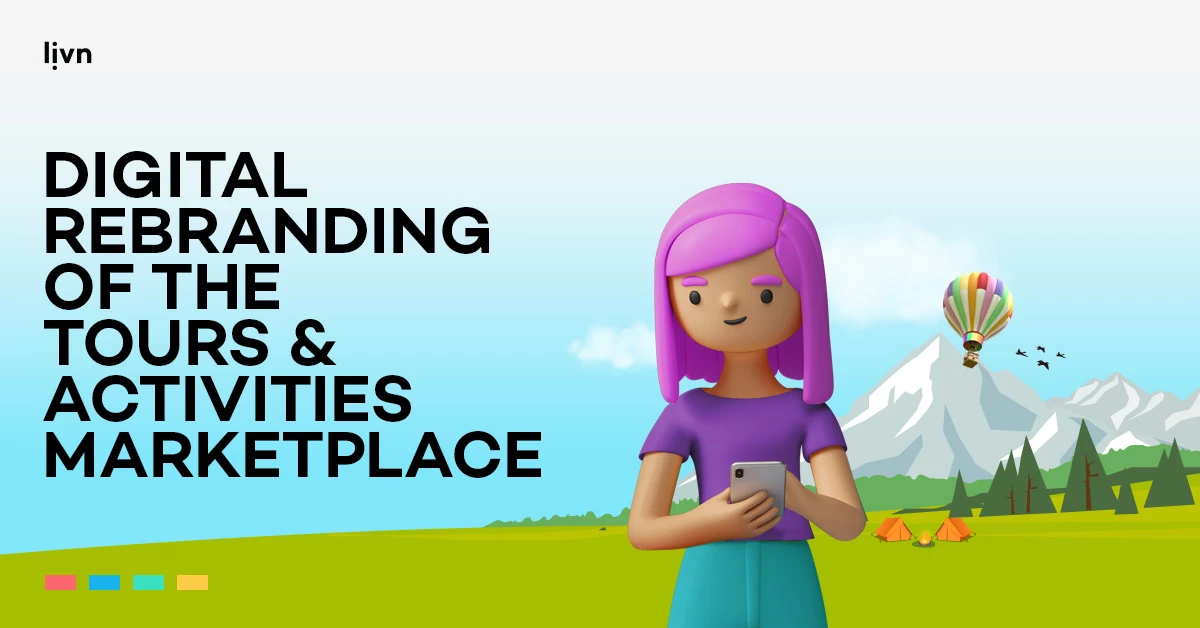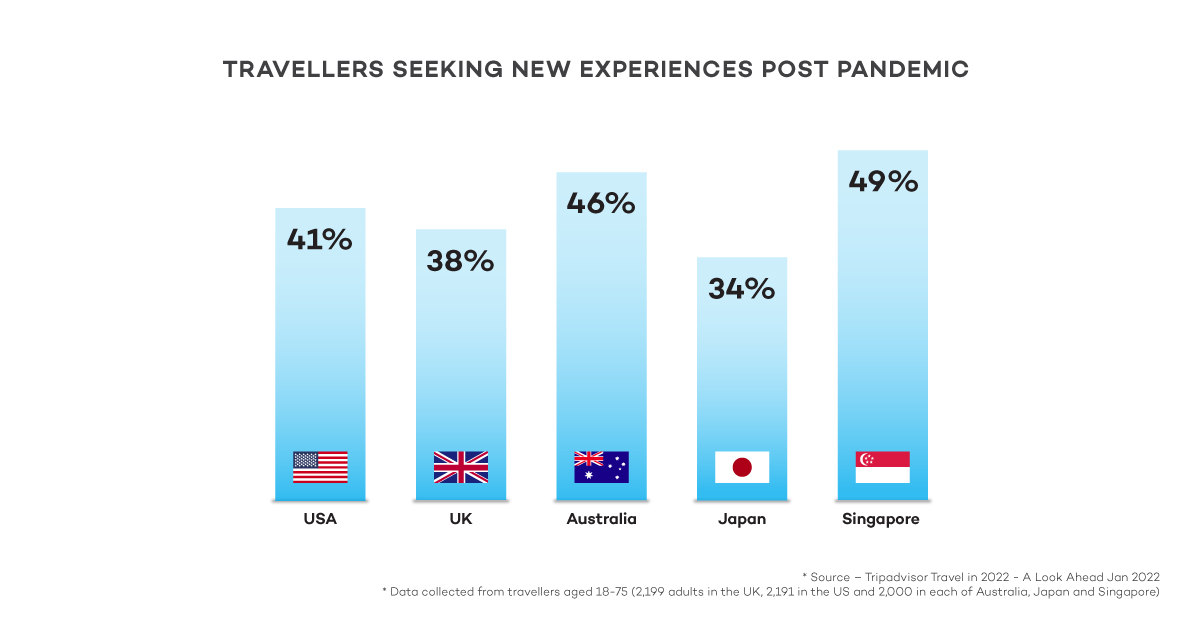
Digital rebranding of the Tours & Activities Marketplace
Digitisation from the pandemic has truly catapulted things forward for tours, activities and attractions. As the conversation turns away from in-person bookings and towards digital booking options, it is important to understand how operators can leverage digital and seamlessly make the most of online channels.
Tours & Activities shifts to online booking preferences
The internet and other digital platforms give travellers the power to book and plan with just a few clicks. This makes it imperative for operators to make the pivot to digital. It will not happen overnight, but one of the most successful digital rebrands has already happened with Eurail. The iconic train system has gone paperless and converted into digital passes. Now, only two years later, 92% of their website sales are for these mobile passes.
Mobile-ready bookings are rising
Arival’s distribution report showed the most significant increase of 14% in mobile bookings, which proves the readiness of travellers to use their mobiles when travelling. This also presents an opportunity for digitising and streamlining multi-attraction passes or activity bundling during the booking process with passes available on mobile tap-and-go devices.
.jpg)
Social media has become part of the booking process
The prevalence of social media should not be ignored by operators either. According to research by Nielsen, 50% of travellers they interviewed had booked or organised trips based on what they had seen in social media videos, photos and shares in their network. For operators in-destination, this is a perfect opportunity to increase brand awareness as well as show off local attractions, sites, and activities.
All signs and trends point to a digital rebranding, so here are some of the ways operators can jump on the opportunities that will shape the future of the tours and activities marketplace.
Standing Out in the Tours and Activities Market
Making a digital rebrand amidst a competitive market can be challenging, especially for small operators, but it is not impossible. Here are a few tips that can help your business go digital and stand out in the tours and activities market.
Optimising Your Website and Social Media
The data above already shows how travellers utilise online resources and social media. So, one of the first ways to stand out in the market is to optimise your website and social media channels.
Your website’s role is critical, with previous data suggesting travellers visit 38 sites before booking online. This means operators need to be top of mind among them. Site aesthetics, speed, responsiveness and user experience need to be optimised to provide a positive customer journey, mainly as travellers are willing to switch off and go to a competitor if the booking process is complex.
For social media, your content and how you interact can make a big difference. Instagram’s reels and stories and TikTok videos provide a sneak peek into your tours, activities and attractions. Bite-size content like these generate high engagement and will influence the customer’s decision-making process while improving awareness.
Facilitate Direct Bookings
Streamlining the booking process is key to customer experience. This has never been easier since Google launched its ‘Things to do’ program, which cuts out the middleman and allows travellers to book directly on an operator’s website from Google Search results. This also ties in nicely with a long-term SEO strategy designed to make tours, activities, or attractions more visible in searches.
Tours and activities businesses are now competing more than ever to be in the first three results of a Google Search. And rightfully so, as this will generate higher traffic to your site. So, investing in the right keywords and optimising your online content is a way to make it easier for customers to find you.
Utilise Augmented or Virtual Reality
The dawn of the metaverse has put virtual reality tech on a pedestal. And this has significant implications for tours and activities. Not only does this provide a marketing opportunity, but it can unlock new potential products with virtual visits, tours, or guides.
As for augmented reality, this gives a new take on how tours are experienced in destinations. Adding this interactive element to tours and attractions can reinvent the everyday experience and appeal to those wanting new experiences post-pandemic.

Offer Contactless Payments
Another way to embrace the pivot to digital and get a competitive advantage is through contactless payments. With technology that allows transportable terminals and payment apps on phones, there is little to no excuse for taking digital payments in 2022. It’s fast, easy and secure. It also makes it more convenient since travellers can minimise the cash they need to carry. But most importantly, it’s hygienic.
Health and safety remain a top priority for travellers. By decreasing physical interactions through contactless payments along with other health and safety protocols, you gain consumer confidence. This can make customers loyal to your business over all others in the industry.
The number one most important lesson is that digital transformation is happening right now, and as the travel industry starts to catch up, operators do not want to be left behind.


